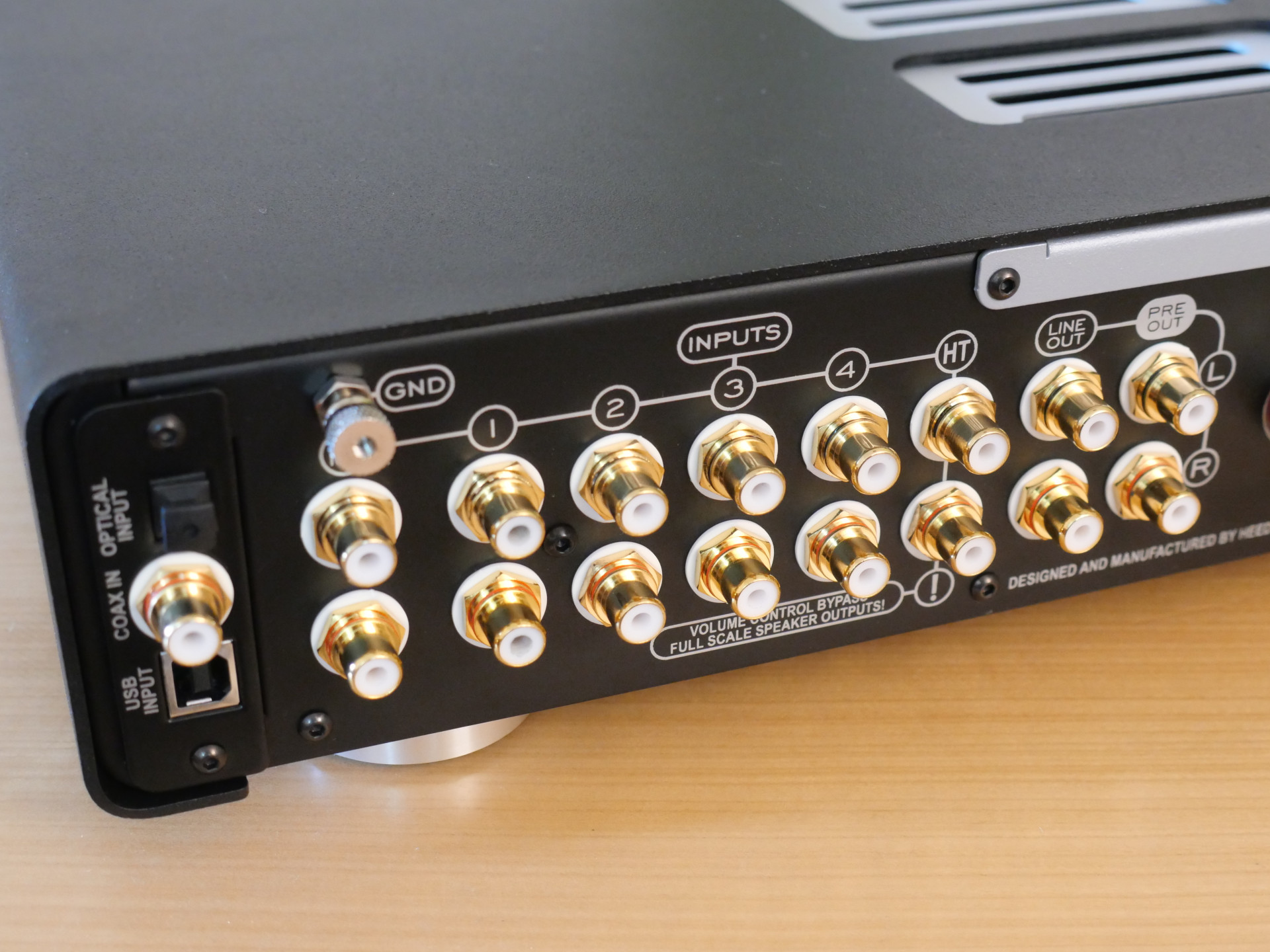The Lagrange’s phono-input is a facility you’d be dumb to ignore. It punches well above its weight, delivering music with an energy, substance and purpose, subtlety and musical coherence that underlines the continuing appeal of vinyl replay. To better it will add boxes, cost and complexity – something that you might want to do in the future, but it certainly far from necessary now. This is a classic case of enjoying what you’ve already got – the grass isn’t always greener…
The Optional DAC
The digital input card for the Lagrange is a not insignificant €790 option. Given the propensity of every integrated amp to include a DAC these days, you might think it’s a no-brainer. I would disagree. Whether or not you opt for the internal DAC on the Lagrange depends to a great extent on what form your digital listening takes and, to that extent, Heed has been extremely smart in making this an option.
Let’s start with the available inputs. With USB and S/PDIF the DAC leans towards disc replay from a basic CD player or transport (you’ll not be surprised to learn that Heed offers the latter) or file replay via USB. A network connection is notably absent, which might seem obtuse, until you appreciate the different ways in which listeners consume streamed music – and the different demands of ethernet as opposed to USB connectivity. For those with an elderly CD player or who stream files via laptop, the DAC card makes perfect sense. But for those who stream via a network connection and streaming services, the rapidly evolving landscape makes a separate, dedicated streaming solution more sensible. There are plenty to choose from: everything from the likes of Wiim or Wattson Audio’s Edison, through to the Innuos PulseMini or Heeds own Abacus S DAC/Streamer. So, whether you want/need S/PDIF as well as a file replay facility, or you are dedicated to network replay will be the deciding factor in whether you opt for Heed’s internal DAC board, or which external Streamer or DAC/Streamer you choose.

Meanwhile, the option to run the amp without an internal DAC offers its own advantages. All too often, adding a DAC to an excellent amplifier can upset one apple cart or the other. Is that the case here? Did I remove the DAC card to discover whether the Lagrange sounds better
without it? I have no clue and no I didn’t: because ultimately, more often than not, the decisions here are going to be dictated by system requirements and circumstance. What I can report is that the DAC board is no slouch. Compared to the (upgraded) DAC in a Cyrus CD player, it offered significantly greater weight, increased depth, space and separation, a broader tonal palette. But what really impressed was the more fluid and articulate timing and phrasing. The Heed’s optional DAC card is well up to current standards when it comes to the temporal domain and rhythmic integrity. Whether you choose to run the internal DAC will depend on where your listening priorities lie and your available source material. But replaying discs from both Heed’s own transport and the elderly Cyrus both produced excellent and highly listenable results. At its relatively modest price, it’s unlikely to disappoint.
How high can you fly?
Some notion of the Lagrange’s ability to grow with a system can be gleaned from its successful use with speakers at up to five times its price – and that’s before you entertain the options for bi-amping. Okay, so I know that a separate matching amp isn’t available, but one of my own personal peculiarities is using a pair of integrated amps to bi-amp. It might sound (slightly) mad, but it’s a solution I demonstrated and sold regularly when I worked in retail. It also offers vertical bi-amping, as opposed to the horizontal topology imposed with a second, separate power amp. This is a significantly superior approach and one I’d love to try with a second Lagrange. I have a sneaking suspicion that the results might be spectacular.

